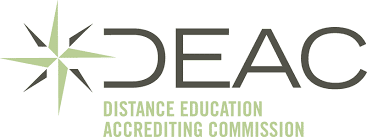How To Teach Question Tags
Join a global community of over 200,000 TEFL teachers working throughout the world! Enrol me!
Learning English is difficult, isn’t it?
See what we did there?!
Yes, you guessed it! Today we’re looking at question tags – what are question tags, what are question tag rules, and how can we teach question tags easily in the English as a Foreign Language classroom?
What are question tags in English?
Question tags are structures we use to prompt a comment from the listener.
They are essentially not questions, but rather a way to get feedback from the person we are speaking to. Question tags are used in spoken English, more in informal than formal situations.
Formulating question tags is not difficult. The challenge for our EFL students comes in using them fluently and appropriately. All of these factors must be considered when teaching them to your students.
How to teach question tags
Focus on form
Firstly, make sure your students are aware of the structure of question tags. In other words, what are the rules of question tags?
We make question tags by adding a negative tag if the sentence is positive and by adding a positive tag if the sentence is negative.
- If a statement is positive, the tag will be negative. If the statement is negative, the tag will be positive.
- Use the first auxiliary in the statement in the tag and invert the auxiliary and the subject.
The same verb is used in the question tags that are used in the sentence. If this sentence is using an auxiliary verb then the question tag will use one too.
- If the sentence contains a modal verb, the tag question will contain the modal verb.
- If there is no auxiliary, use do.
Look at these examples which illustrate these points:
It’s a beautiful day, isn’t it?
You’re not hungry, are you?
They couldn’t see me, could they?
You live here, don’t you?
Don’t forget about question tag intonation.
There is a change in intonation depending on the answer you are expecting to the question.
If you already know the answer so you are expecting a “yes” the intonation will fall. If the question is one where you’re not sure if the answer will be “yes” or “no” your intonation will rise.
Use guided discovery
While it would be easy to spell out the formula to your students, rather use guided discovery. Let the students figure out the rules for themselves.
Provide the students with a conversation which has a few question tags in them and give them time to compare and contrast the different examples.
Because this is a relatively straightforward structure, they should have no difficulty discovering the formula for themselves.
Focus on function
The trick with question tags is knowing how to use them appropriately.
Provide your students with numerous examples of dialogues with question tags, so that they can get a feel for when it is relevant to use them and what responses are expected; this is the key to sounding natural in English.
Allow time for practice
Give your students ample examples of question tags which they need to form in order for them to practice the form of the structure. Spending time on this will give your students confidence that they can produce the structure accurately and appropriately.
Free practice
Now put your students in situations in which they can practice question tags in a free context.
In other words, set up a situation in which your students will need to use question tags and let them come up with their own creative productions.

A question tag activity
Students write down a set of facts they think is true of their classmates. They mingle and, by using question tags, find out if they were right or wrong.
For example: I think Sara comes from Basel.
Sara, you come from Basel, don’t you?
Using question tags is a way of sounding very natural and so it is an important skill for our EFL students to master.
By following these ideas you’ll be guaranteed that your students will soon be using question tags effortlessly.
Accreditation & Quality Assurance
The TEFL Academy was the world’s first TEFL course provider to receive official recognition from government regulated awarding bodies in both the USA and UK. This means when you graduate you’ll hold a globally recognised Level 3 (120hr) Certificate or Level 5 (168hr) Diploma, meaning you can find work anywhere and apply for jobs immediately.
 United Kingdom
UK
United Kingdom
UK












